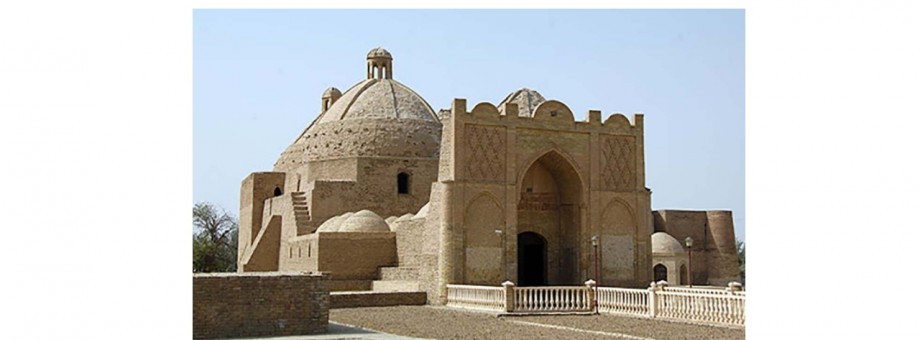MAUSOLEUM IN MEMORY OF THE BEAUTIFUL ZUBEIDA

Two kilometers from the Alamberdar mausoleum, in the other part of the Astana-baba village, there is an architectural complex of the same name. Ziyarat, a ritual of worship performed by pilgrims, is constantly performed here.
There are several legends about the appearance of the shrine. So according to the most popular legend among the people, the ruler of Charvelayat, the medieval region of Khorasan, a certain Khazret Nur-oglu (in another version - Ubeida) had a daughter of Zubeida. The beauty was married to the governor of Kerkin, but soon after the wedding she died. The saddened father brought the best craftsmen from Merv and Samarkand to build a beautiful mausoleum for her. But as soon as the work was over, the building collapsed, and this was repeated three times. Ubeida fell into despair and one night saw in a dream the elder Astana-baba, who said that only under one condition the mausoleum would stand firmly: clay and water for its construction must be brought from Mecca. The ruler equipped a caravan and sent it to the holy city for all Muslims. The brought clay was mixed with clay used for making bricks. And the water was poured into the well-used by the builders. They finished their work, and after a while Ubeida himself was buried next to his daughter. The legend partly explains the reason for the holiness of this monument - it uses clay from Mecca itself!
The architectural ensemble of Astana-baba is not one, but several structures, at different times attached close to each other, so it is difficult to even imagine what the original appearance of the building was. After passing a narrow open corridor, which is now surrounded by a modern balustrade in a European style, visitors find themselves on a small platform in front of the arched entrance. This is followed by a covered vaulted gallery, leading to the cramped chambers. The next room is usually called a mosque. This is a spacious hall, covered with a dome, with rich brick ornaments and the remains of carved terracotta, which is typical for the best architectural works of the 11th-12th centuries. Archaeological research has confirmed that this particular "room" is the most ancient part of the Astana-baba complex, built during the Ghaznavids' reign.
Through a small doorway from the prayer hall, you can get into a room of the same size with two tombstones. It is believed that Zubeida and her father Ubeida are buried here, and according to another legend, the brothers Zeid-Ali and Zuweid-Ali. The light rays coming in here from the side windows and the lantern in the center of the dome allow you to see all the details of the interior well. The same cannot be said about the semi-dark hall located through the wall where, according to legend, the wives of the above-named brothers’ rest, that is why that hall is called Gyzlar-bibi. This is the latest addition to the complex, dating back to the 19th century.
In 2010, craftsmen from the Kerki State Historical and Cultural Reserve completed a cycle of restoration work in Astana-baba. They restored the vaulted corridor, rebuilt the nine domes of the four-pillar hall that had collapsed a long time ago, eliminated the emergency masonry sections of the main structures, renewed the brick lining of the domes and landscaped the territory adjacent to the complex.
Mausoleum in memory of the beautiful Zubeida (turkmenistan.gov.tm)


 NEWS
NEWS